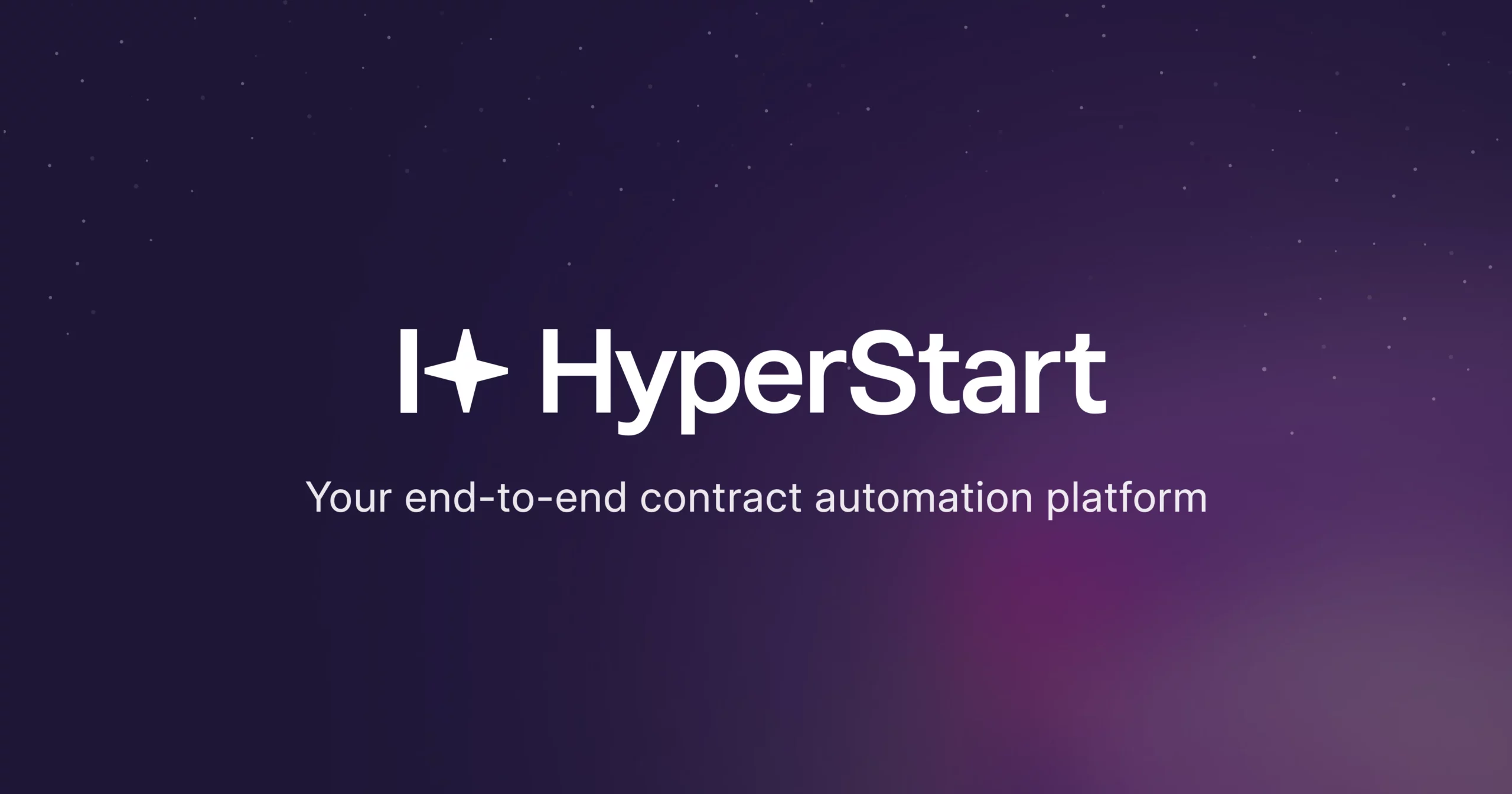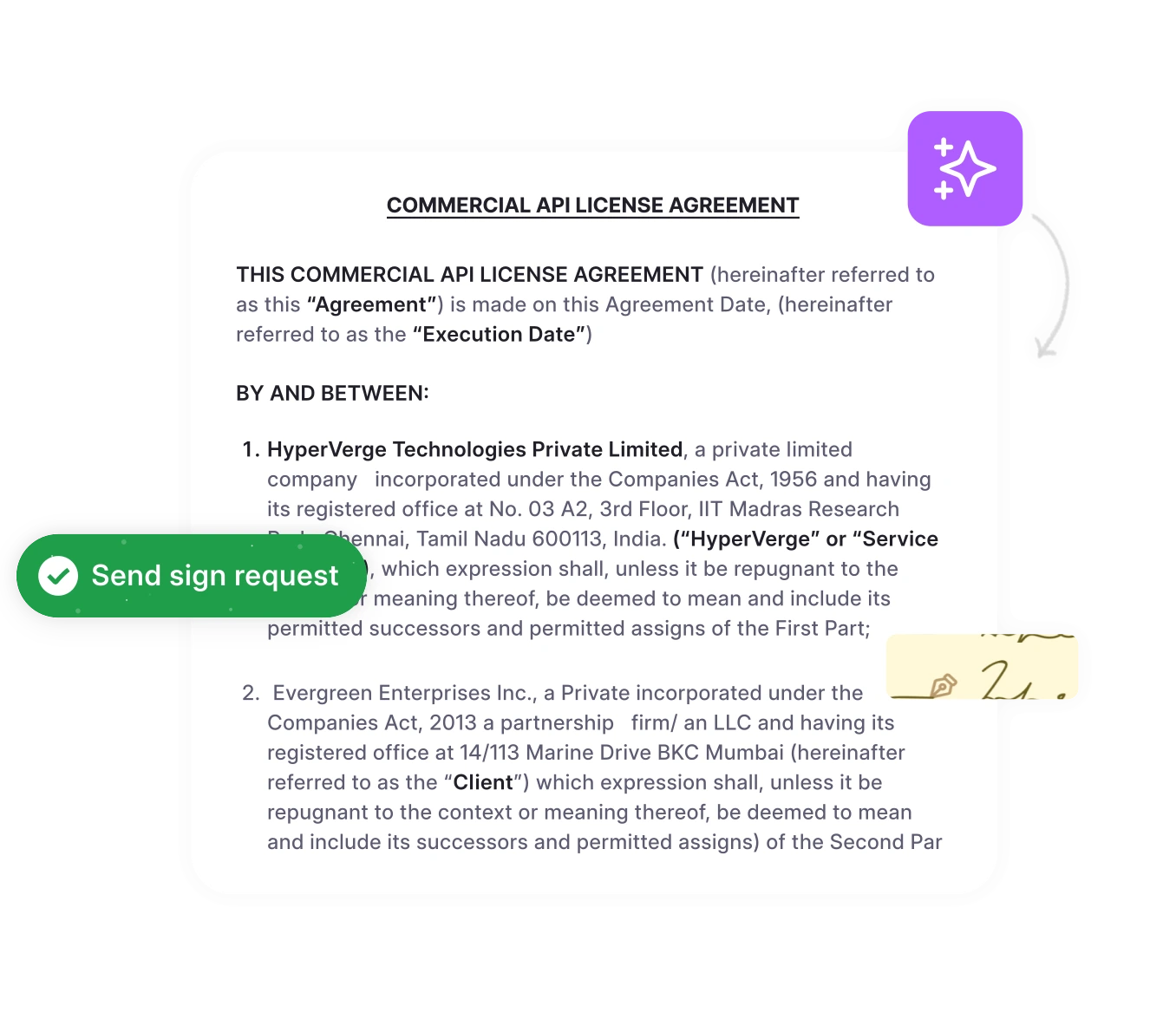Are repetitive manual tasks draining your legal team’s time and resources?
Traditional legal processes, from contract management to compliance tracking, often need to be faster and more error-prone. These inefficiencies lead to delayed operations and increase the risk of non-compliance.
Legal automation offers a powerful solution by streamlining tasks with AI-driven tools like contract management tools, legal research platforms, and document review software.
Legal automation enhances accuracy and speed by automating routine legal work like contract generation and document review.
Let’s discuss the definition of legal automation, its types, implementation, and benefits. Also, let’s guide you through when and why you require it.
What is legal automation?
Legal automation is the use of technology to streamline and automate routine legal tasks and activities traditionally performed by legal professionals. This includes automating processes like contract creation, document review, compliance checks, and case management.
What does legal automation include?
Here are the key tasks and processes that legal automation includes:
- Document generation: Creating contracts, agreements, and other legal documents from templates.
- Compliance management: Automating checks to ensure regulatory compliance.
- Case and matter management: Streamlining the organization and tracking of cases.
- Legal research: Using AI tools to quickly find relevant case laws and statutes.
- E-discovery: Automating the identification, collection, and processing of digital evidence for litigation.
- Task tracking and reminders: Setting automated reminders for deadlines and important case milestones.
- Client communication: Using chatbots or automated emails to keep clients informed about case updates and status.
a contract management system uses AI to automatically generate standard contracts and flag potential issues. This cuts down on manual review time and reduces errors, freeing legal teams to focus on complex and strategic tasks.
A Thomson Reuters report shows that 38% of law firms are using document automation, and 47% are using AI-driven document review to catch errors that might be missed in manual reviews. This growing reliance on automation shows a shift towards improving essential legal functions.
Let’s figure out the scenarios where you must implement legal automation.
When to implement legal automation
Deciding when to implement a legal automation solution transforms legal operations and improves efficiency and accuracy. You must consider adopting legal automation in the following scenarios:
When your team faces many routine tasks like contract drafting and document review.
If you are required to manage complex compliance regulations and ensure consistent adherence.
When traditional manual processes are causing delays, errors, or operational bottlenecks.
If you are expanding your business and require scalable solutions to manage increased legal workloads.
Types of legal automation
Legal automation offers various solutions tailored to streamline specific tasks within legal teams. From document generation to compliance tracking, these legal task automation platforms address a range of challenges.
Here is the breakdown of the most common types of legal automation and where these types are applied.
| Type of Legal Automation | Description | Common Applications |
| Document automation | Uses templates and workflow automation to generate and manage documents quickly. | Contract creation, NDA generation, Updating policies |
| Contract management automation | Manages the contract lifecycle by tracking stages like drafting, negotiation, approval, and renewal. | Managing renewals, Vendor agreements, Contract approvals |
| AI legal assistants | Employs artificial intelligence to analyze legal texts, perform research, and assist in document drafting. | Case research, Drafting legal briefs, Document review |
| Compliance automation | Monitors and ensures adherence to legal and regulatory standards using automated alerts and reporting. | Regulatory reporting, Compliance audits, Due diligence checks |
| Automated risk management | Identifies and mitigates legal risks through automated tracking and data analysis. | Risk assessment, Fraud detection, Liability tracking |
| Obligation management | Ensures compliance with contractual and regulatory obligations, tracking deliverables and deadlines. | Compliance tracking, Obligation monitoring, Contractual deliverables |
Each type of legal automation serves a distinct purpose.
Integrating the right tools helps in-house legal teams reduce manual workload and improve efficiency. Law firms and corporate legal departments can also manage tasks more effectively and ensure compliance at every step.
Want to Automate Your Legal Processes?
Streamline your contract management with HyperStart and experience a 5X faster review and signing process.
5 Major benefits of legal automation for your business
Here are the top 5 benefits of legal automation.
1. Boosts legal workflow efficiency
Legal automation improves workflow efficiency by streamlining repetitive tasks and reducing manual efforts in legal services. Automated processes help manage routine activities like document creation, contract management, and compliance tracking more quickly and precisely than traditional manual methods. This results in faster turnaround times and allows professionals to focus on more strategic activities. Learn more about how you can streamline contract management in our detailed guide on legal contract management.
2. Enhances legal document review accuracy
Legal automation systems reduce the risk of manual errors in legal document review. Using advanced algorithms and artificial intelligence, these legal automation tools detect inconsistencies, errors, and compliance issues overlooked during manual reviews. This leads to more accurate and reliable documents minimizing the risk of costly legal mistakes and ensures the documents meet standards.
Recently, the leading SaaS company LeadSquared chose HyperStart CLM to overcome challenges with managing a high volume of contracts. HyperStart’s advanced AI capabilities helped LeadSquared improve its contract review process. Contract creation time was cut by 60%, and contract review with AI saved 6+ hours.
3. Reduces administrative operational costs
Integrating legal automation results in cost savings for legal firms by reducing manual labor requirements and minimizing administrative overhead. Automation tools excel at managing document handling, contract generation, and compliance monitoring. This helps businesses reduce the need for extra staff and cut operational costs.
4. Improves compliance tracking accuracy
Automated compliance tracking ensures that your business remains aligned with the existing regulations and legal standards. Automation tools help prevent non-compliance issues by consistently monitoring and updating compliance requirements. This approach protects against legal penalties and reputational damage. Automated alerts and reporting features also assist in keeping your legal department informed about any changes or issues.
5. Optimizes resource allocation and utilization
Legal automation optimizes resource allocation by freeing up valuable time and allowing your legal team to focus on high-impact tasks. As per a Technology Survey by Law360, 9% of a lawyer’s time can be replaced with automated tasks.
Resources like personnel and budget can be redirected toward more strategic initiatives with routine task automation. This enhanced usage of resources results in better performance and management of legal operations.
Achieve 75% Faster ROI
Automate your contract processes to reduce admin time, boost collaboration, and never miss a renewal.
How to implement legal automation in your business
Here is the step-by-step process for implementing legal automation in your business.
Step 1. Assess and plan specific legal tasks for automation
To successfully integrate legal automation, identify which tasks can benefit the most from automation. You must assess your current workflows to determine where automation can save time and reduce errors.
What tasks are currently repetitive and time-consuming for your team?
Are there specific document types or processes that frequently require manual intervention?
Which tasks are prone to human error or inefficiencies?
What legal processes are most critical and could benefit from faster turnaround times?
By planning which tasks to automate, you can target your legal processes’ most critical pain points. This approach ensures your automation strategy delivers clear and measurable improvements.
Step 2. Select and customize the best automation tool for your needs
Finding the right legal automation tool is important for a smooth implementation. You can start by researching reliable review platforms like G2, Capterra, and SoftwareAdvice. These platforms help you compare the software’s features, reviews, and pricing, whether you are looking for AI-powered contract management software or compliance automation tools for legal services.
Here are some of the factors you should consider when choosing the right legal automation tool for your needs:
Ensure that the tool integrates smoothly with your current systems and software. This compatibility will facilitate seamless operation and data flow between different platforms.
Look for tools that offer customization options to tailor the system as per your specific legal processes and requirements.
Choose a tool with an intuitive user interface that is easy to navigate. A user-friendly design will accelerate adoption and minimize the learning curve.
Consider the availability of training resources and ongoing support. Better training will help your team get up to speed quickly.
Evaluate the cost of the tool and its scalability. Ensure that it fits within your budget and can scale to accommodate future growth and additional requirements.
Not considering these factors leads to selecting the wrong tool, resulting in inefficiencies and low user satisfaction. To avoid these issues and enhance your contract processes, leverage legal automation for contract management with HyperStart. As contract automation software, HyperStart integrates easily with your existing systems and offers advanced customization to optimize your contract processes.
Step 3. Train your team and implement the automation system
With the right legal automation software in place, start developing a structured training program for your in-house legal teams. This must include hands-on sessions and detailed guides on using the new automation tools. Such a program addresses specific administrative tasks and common challenges to ensure your team is well-prepared to accurately use the tool.
After the successful training, if possible, implement the legal automation platform in phases. Initiate with a small group of users to test the system and then proceed with a full organization-wide deployment. This phased approach allows you to address issues as they arise and make adjustments before full deployment.
Step 4. Monitor performance and optimize based on feedback
Now, actively monitor how well the automation system performs and how it impacts your workflows. You need to consider the following pointers:
Track key performance indicators (KPIs) like processing speed, accuracy, and efficiency to assess improvements.
Request feedback from team members on system usability. This helps pay attention to any difficulties or areas for improvement the team has identified.
Use performance data and user feedback to implement necessary changes and optimize the system.
Consistently optimizing your automation system ensures it remains effective and aligned with your evolving business needs.
Step 5. Ensure compliance and conduct regular system reviews
After the system’s initial optimization following deployment, it’s time to focus on ongoing maintenance. These tools must be updated regularly to ensure compliance with evolving regulations. You can implement a routine for periodic system reviews and audits to ensure that your legal process automation continues to meet legal requirements and industry standards.
Also, stay updated about the changes in regulations that impact your system. Proactive updates and regular compliance checks help prevent legal issues and ensure the longevity of your automation investment.
Automate legal workflows for efficient contract management
Legal automation is a powerful solution for transforming legal workflows. From streamlining routine tasks to improving client interactions, automation is not just a trend but a strategic necessity for modern legal practices.
A prime example of a tailored automation solution is HyperStart CLM. HyperStart offers an advanced AI-powered Contract Lifecycle Management (CLM) solution that takes legal operations automation to the next level. Here are a few of the benefits associated with HyperStart:
5X faster contract review and signing processes.
80% contract administration time slashed.
3 day implementation.
1 billion + documents processed by AI.
75% faster ROI with scalable plans.
With such expertise, HyperStart speeds up contract management and reduces administrative tasks. To see how HyperStart can transform your legal operations, contact our team today.












